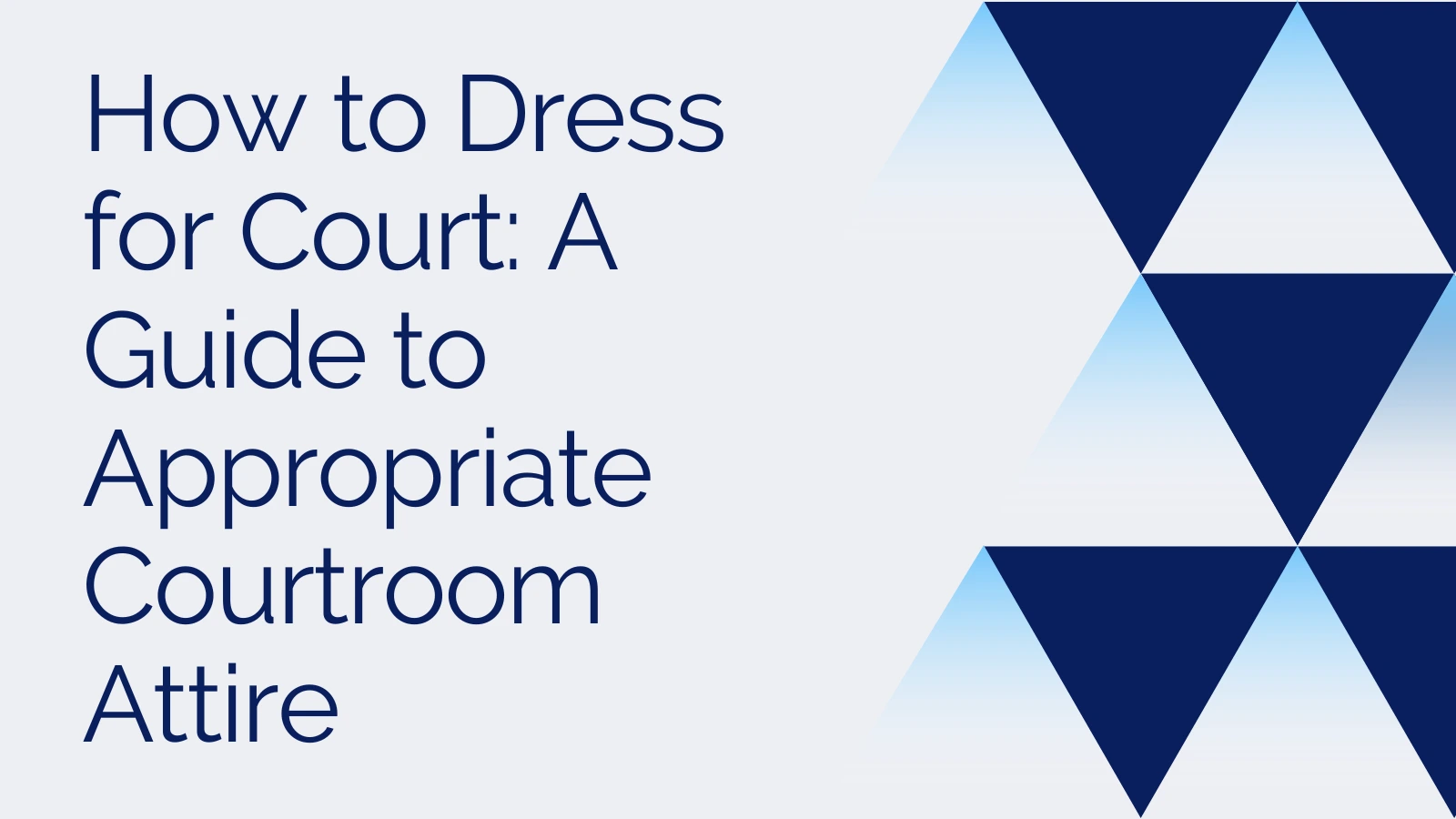How to Dress for Court: A Guide to Appropriate Courtroom Attire
Importance of Dressing Appropriately for Court
Dressing appropriately for court is not just about following a dress code. It is about showing respect for the court, the judge, and the legal process. The way you dress can affect how you are perceived by the judge, jury, and other court officials, and can even impact the outcome of your case.
What to Wear to Court
When choosing what to wear to court, it is important to keep in mind that the goal is to look professional and respectful. Here are some guidelines to follow for different groups:
For Men
- Wear a suit, if possible. If not, wear dress pants and a dress shirt.
- Choose a solid color dress shirt in white or a muted tone.
- Wear a tie, but avoid flashy or novelty ties.
- Wear dress shoes in black or brown.
- Avoid wearing hats or sunglasses.
For Women
- Wear a suit, if possible. If not, wear a dress or dress pants with a blouse.
- Choose conservative colors such as navy, gray, or black.
- Keep jewelry to a minimum, avoiding anything too flashy or distracting.
- Wear closed-toe shoes in a neutral color.
- Avoid wearing revealing clothing or high heels.
For Children
- Dress children in formal attire similar to what they would wear to a wedding or special occasion.
- Avoid clothing with graphics or loud prints.
- Make sure clothing is clean, pressed, and fits properly.
Key Principles:
- Respect the Venue: Courts symbolize authority; dress conservatively to honor this tradition.
- Minimize Distractions: Avoid flashy patterns, logos, or revealing cuts that divert attention from your case.
- Cultural Sensitivity: Research local norms or consult your attorney to avoid unintended faux pas.
Curating Your Courtroom Wardrobe: Gender-Inclusive Guidelines
For All Genders:
- Color Palette: Stick to muted tones—navy, charcoal, or black—to project neutrality.
- Fit & Fabric: Opt for tailored, wrinkle-free garments. Ill-fitting clothes imply carelessness.
- Footwear: Closed-toe dress shoes (e.g., oxfords, loafers, modest heels) underscore formality.
Women & Femme-Presenting Individuals:
- Ensembles: Pantsuits, knee-length skirts with blazers, or conservative dresses.
- Accessories: Delicate jewelry; avoid statement pieces.
- Grooming: Natural makeup, tied-back hair for a streamlined look.
Men & Masculine-Presenting Individuals:
- Suits: A well-fitted suit (single/double-breasted) with a collared shirt and tie.
- Alternatives: Dress slacks with a blazer and button-down shirt.
- Grooming: Clean-shaven or trimmed facial hair; polished shoes.
The Forbidden List: What Not to Wear
Avoid these courtroom taboos to prevent undermining your case:
- Casual Wear: Jeans, sneakers, tank tops, or athleisure signal indifference.
- Overly Revealing Attire: Low necklines, short hemlines, or sheer fabrics distract.
- Loud Accessories: Chunky jewelry, bold hats, or flashy watches.
- Graphic Tees/Logos: Slogans or brands divert focus from your narrative.
- Strong Scents: Perfumes/colognes may irritate in close quarters.
Pro Tip: Cover visible tattoos if possible—opt for long sleeves or high collars
Revealing Clothing
- Low-cut tops or short skirts.
- Tank tops or sleeveless shirts.
- Clothing that exposes undergarments.
Clothing with Offensive Messages or Images
- Clothing with curse words or offensive language.
- Clothing with images of drugs, alcohol, or violence.
- Clothing with political or religious slogans.
Other Considerations
In addition to clothing, there are other aspects of personal appearance to consider when dressing for court:
Grooming
- Make sure hair is clean and well-groomed.
- Avoid excessive perfume or cologne.
- Men should be clean-shaven or have neatly trimmed facial hair.
Jewelry and Accessories
- Keep jewelry to a minimum.
- Avoid wearing large or distracting pieces of jewelry.
- Remove facial piercings and cover tattoos, if possible.
Conclusion
Dressing appropriately for court is an important part of showing respect for the judicial system and demonstrating that you take your case seriously. Following these guidelines can help you make a positive impression on the judge, jury, and other court officials.
FAQs
- Can I wear jeans to court? No, jeans are considered too casual for court and should be avoided
- Can I wear sneakers to court? No, sneakers are not appropriate for court. Wear dress shoes instead.
- Is it necessary to wear a suit to court? While it is not always necessary to wear a suit, it is the most professional option. If you do not own a suit, dress pants and a dress shirt are acceptable alternatives.
- Can I wear makeup to court? Yes, you can wear makeup to court, but keep it simple and natural-looking.
- Can I bring a coat or jacket into the courtroom? Yes, you can bring a coat or jacket into the courtroom, but it should be removed when you enter the courtroom.




